Tile Roofers Phoenix
Find the best Tile Roofing Company in Phoenix
Get 3 FREE Tile Roofer quotes for your project today! Compare profiles, reviews, accreditations, portfolio, etc... and choose the best deal.

Star Roofing
4.536 reviews9201 N 9th Ave, Phoenix, 85021, USStar Roofing Contractor has been providing top-notch roofing in Arizona commercial buildings and Phoenix homes since 1954. We understand that in our hot and dry desert climate, your roof is the first line of defense to keep your home or business cool and that it’s one of the most important investments you can make. We are an approved applicator for most major Commercial roofing systems. As well as any roof replacement or repair is an easy task we can handle. No other Valley roofing company has the experience and expertise to meet our area’s special roofing needs. Although, our main office is located in Phoenix, we cover the state of Arizona. And are also a licensed roofing contractor in the states of Nevada and New Mexico. When you need a new roofer or roofing repair or service of an experienced roofing company call us at 602 944 3323. Let’s show you why we’re “the solver of your roofing problem.” Certified Member of National Roofing Partners since 2001
- Services
- Why Us?
- Accreditations
- Gallery
Get Quote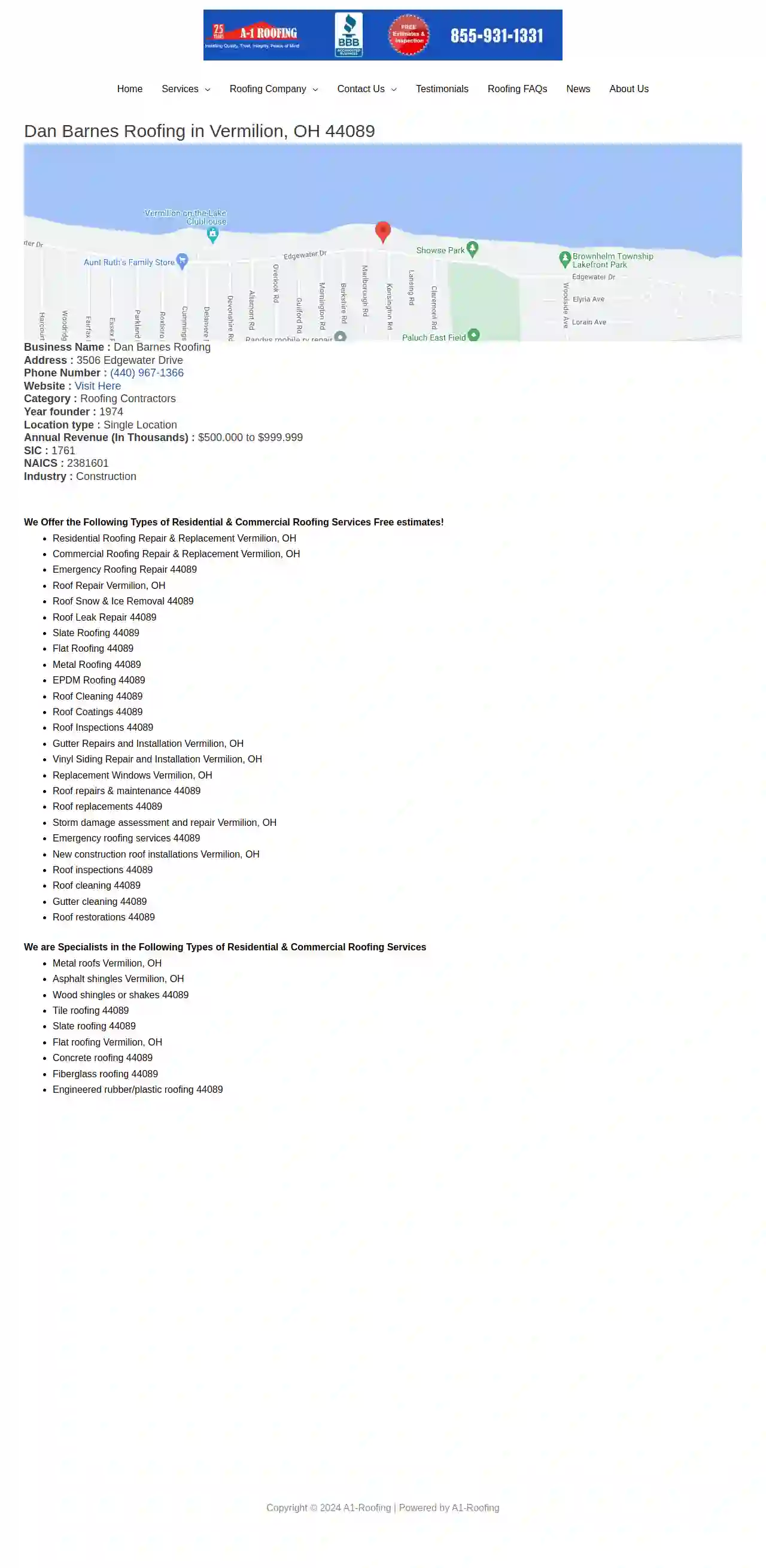
Dan Barnes Roofing
44 reviews3506 Edgewater Drive, Vermilion, 44089, USA-1 Roofing, has built its high reputation as a leading Dallas Roofing company based upon quality workmanship, using best roofing materials, and customer service. A-1 Roofing specializes in residential and commercial roofing services. We are a locally owned company with over 25 years experience as roofing contractors. We serve the roofing needs of the Dallas metro area, with additional offices in Austin and Houston. We provide your home or business with superb workmanship, and we can handle any roofing projects in Texas.
- Services
- Why Us?
- Gallery
Get Quote
Arizona's Finest Roofing
4.522 reviews36480 North Texas Ranger Road, San Tan Valley, 85140, USWelcome to Arizona's Finest Roofing, a family-owned and operated roofing company serving San Tan Valley, Mesa, Phoenix, and Scottsdale, Arizona. We pride ourselves on providing the finest quality roofing materials and services to our customers. Our team is dedicated to ensuring that every roof we install is done right the first time, and we stand behind our work with a best price guarantee. We offer a wide range of roofing services, including roof repair, maintenance, and upgrades. Our team is experienced and knowledgeable, and we use only the finest quality materials to ensure that your roof is secure and long-lasting. Contact us today to schedule a free estimate and let us help you protect your home with a quality roof.
- Services
- Why Us?
- Accreditations
- Our Team
- Testimonials
- Gallery
Get Quote
Southern Arizona Roof Associates, LLC
4.976 reviews3429 E. Kleindale Rd. Suites 101-121, Tucson, 85716, USSouthern Arizona Roof Associates, LLC is a family-owned and operated roofing company with over 40 years of experience. We are dedicated to providing our customers with the highest quality roofing solutions, using only the best materials and techniques. Our team of experts is committed to delivering exceptional service, ensuring that every roof is installed to perfection. We offer a wide range of services, including roof repair, restoration, and replacement, as well as maintenance and inspections. Our goal is to provide our customers with peace of mind, knowing that their roof is secure and protected. We are proud to be a part of the Tucson community and look forward to serving our customers for many years to come.
- Services
- Why Us?
- Accreditations
- Our Team
- Testimonials
- Gallery
Get Quote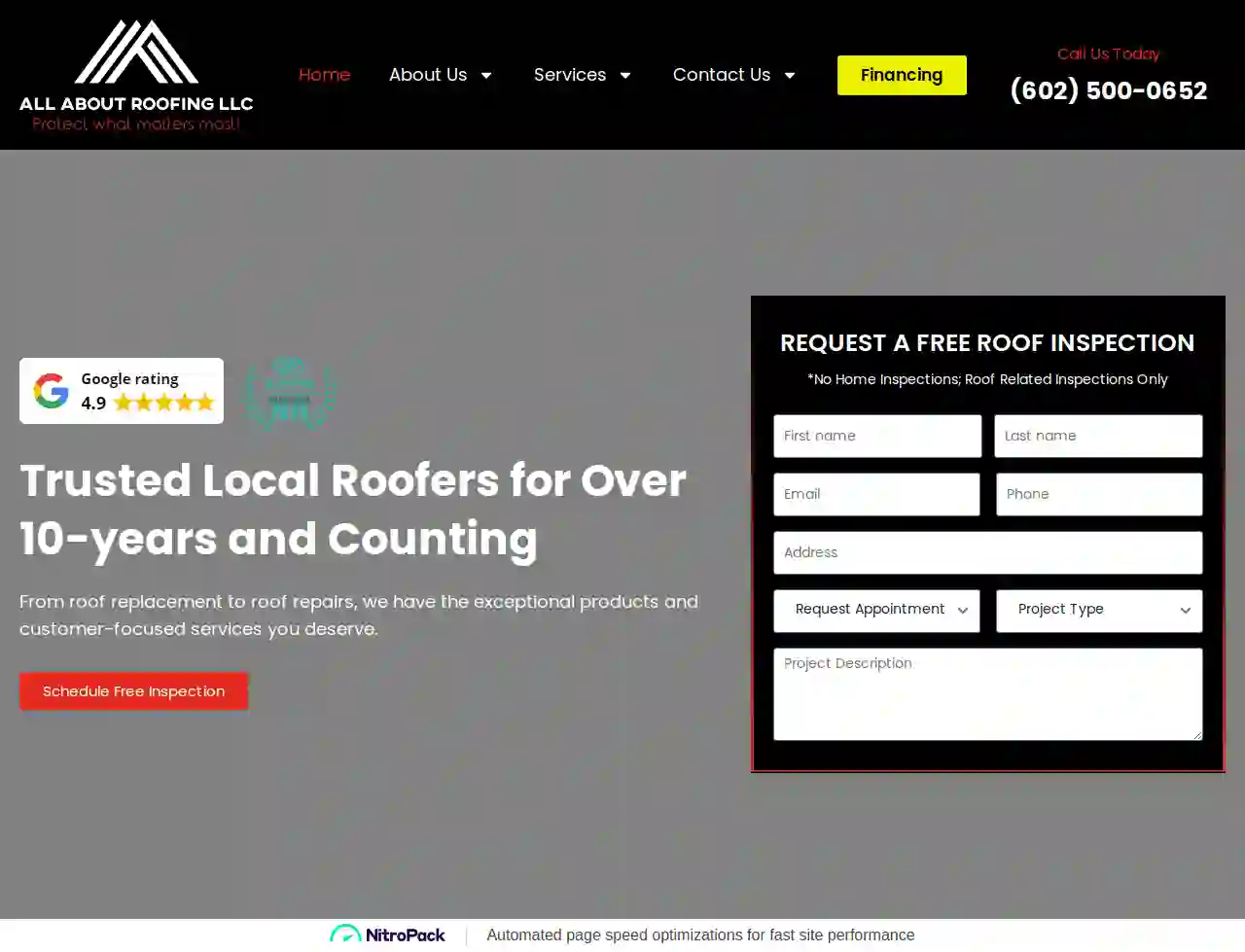
All About Roofing LLC
4.9451 reviews13260 W. Foxfire Dr Suite 10, Sun City West, 85378, US- Services
- Why Us?
- Accreditations
- Gallery
Get Quote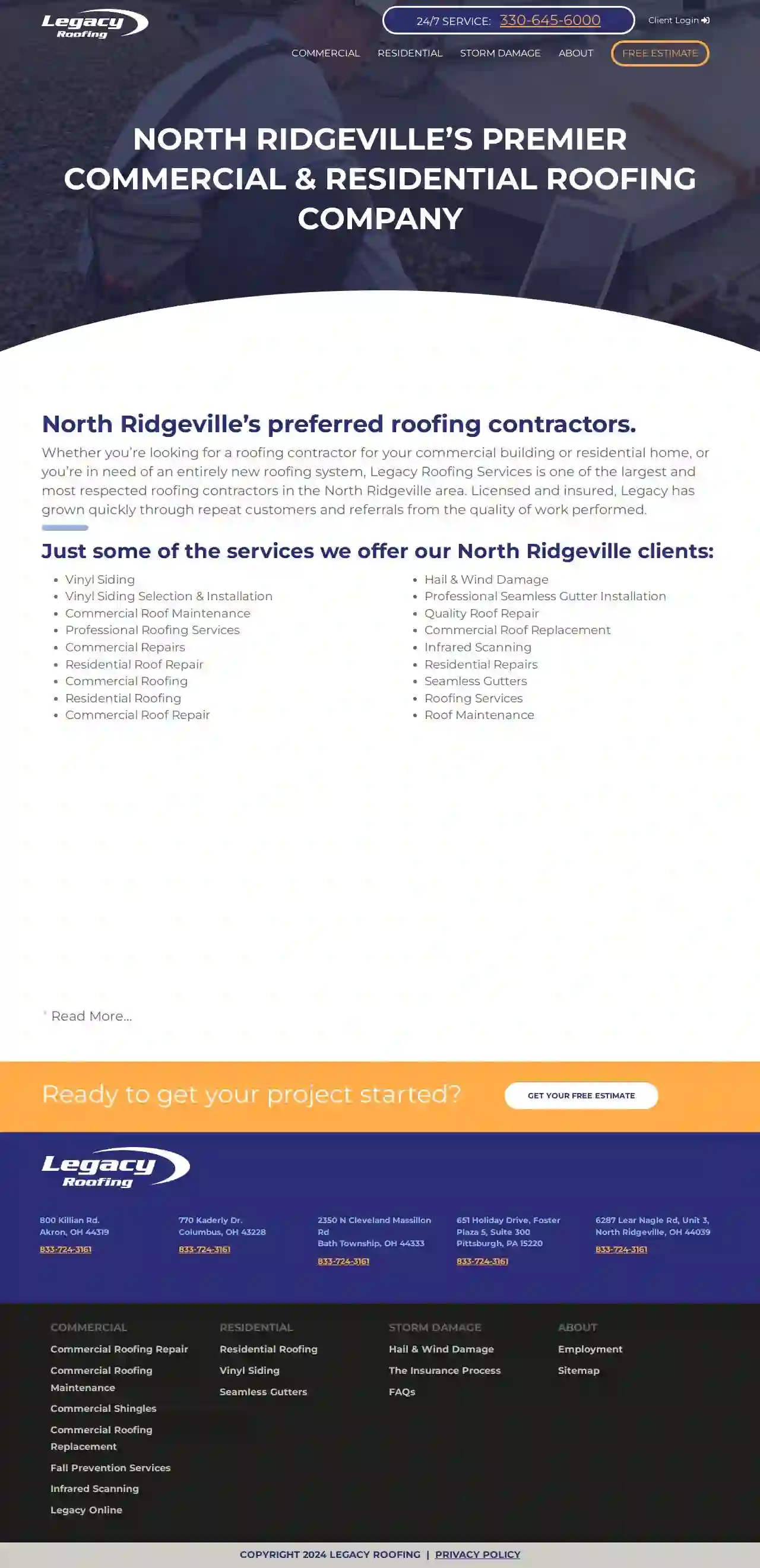
Legacy Roofing Services North Ridgeville
4.979 reviews800 Killian Rd., Akron, 44319, USLegacy Roofing Services is one of the largest and most respected roofing contractors in the North Ridgeville area. Licensed and insured, Legacy has grown quickly through repeat customers and referrals from the quality of work performed. Whether you're looking for a roofing contractor for your commercial building or residential home, or you're in need of an entirely new roofing system, Legacy Roofing Services is equipped to deal with all kinds of roof installations and repairs. Your brand new roof will be long lasting, energy efficient, sustainable, and will meet your budget.
- Services
- Why Us?
- Testimonials
- Gallery
Get Quote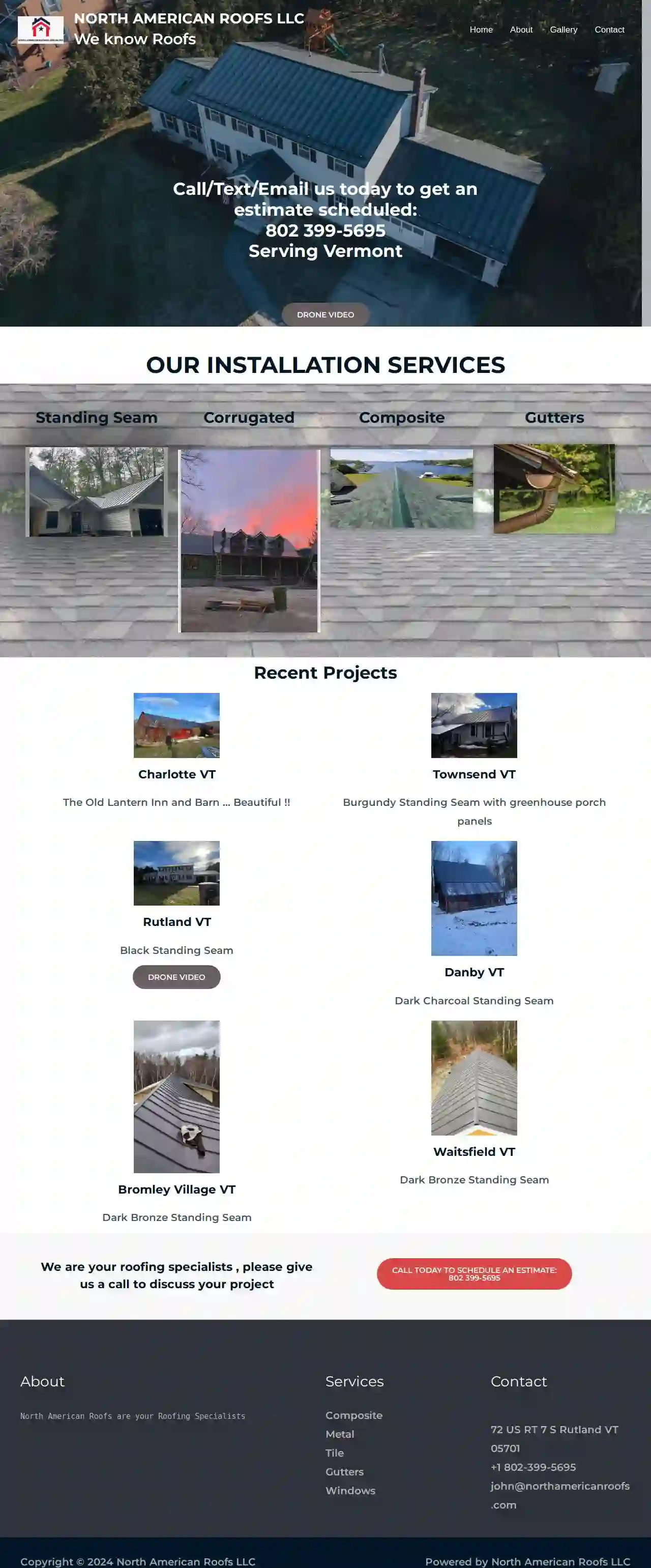
North American Roofs
72 US RT 7 S, Rutland, 05701, USNorth American Roofs LLC is your trusted roofing specialist serving Vermont. We are dedicated to providing high-quality roofing solutions for all your needs, from installation to repair. With years of experience and a team of skilled professionals, we ensure your roof is in good hands. We offer a wide range of roofing services, including composite, metal, tile, and gutter installation. Our commitment to customer satisfaction is unwavering, and we strive to exceed your expectations with every project. Contact us today for a free estimate and let us help you protect your home with a durable and reliable roof.
- Services
- Why Us?
- Gallery
Get Quote
Phoenix Roofing
4.927 reviews20 E Thomas RD, STE 2200, 20 E Thomas RD STE 2200, Phoenix, 85012, USPHOENIX ROOFING EXPERTSWhen your home is damaged in a storm, don't just fix it – upgrade it. We'll provide a comprehensive inspection at no cost. FREE ESTIMATES STRESS FREE SOLUTIONSLet Phoenix Roofing negotiate with your insurance on your behalf. Our team is here to help, schedule a no-obligation inspection today. PHOENIX ROOFING PROFESSIONALSWe have specialized restoration and installation teams and Phoenix roofing contractors with over 50 years of experience to ensure each project is completed to the highest standards of quality. HIGH-LEVEL CERTIFICATIONS Phoenix Roofing has a commitment to excellence is evidenced by our prestigious certifications, including designations as a Platinum Pella Certified® Contractor and GAF Master Elite™ ContractorINDUSTRY-LEADING WARRANTIESYou can rest easy knowing your investment is thoroughly protected because we provide the industry’s best product and service warranties. COMPREHENSIVE SOLUTIONSWe are a one-stop shop, providing everything you need to restore and upgrade your home or business exterior in an efficient and cost-effective manner.Phoenix RoofingYOUR ONE-STOP SHOP FOR EXTERIOR RENOVATION AND MAINTENANCEWe are an experienced contracting company specializing in windows, roofing, gutters, siding, stucco, and garage doors, as well as maintenance services, for home and business owners. We make the home improvement or restoration process as easy as possible by providing exceptional products and service and working on your behalf to maximize your insurance payout. Our insurance claim specialists have a ton of experience when it comes to Phoenix roof damage. Learn MoreOUR STORM RESTORATION PROCESSStreamlined Phoenix Roofing Service to Maximize Value for Our CustomersAt Phoenix Roofing, we have a carefully honed process to ensure efficient, precise home repair services. After your home has been damaged in a storm, we’ll provide a free, comprehensive inspection and estimate. We’ll negotiate with your insurance company to ensure you receive a fair payout and have our team of experienced technicians return your home to like-new condition. In most cases, your restoration will be an opportunity to upgrade your home’s beauty, energy efficiency, and protection against the elements. Forbes explains how to go through the claim process here. The insurance claim process can be very difficult to navigate through. We are able to assist you in this process
- Services
- Why Us?
- Accreditations
- Our Team
- Testimonials
- Gallery
Get Quote
Tecta America Arizona Commercial Roofing
4.73 reviews3440 E Broadway Rd., Phoenix, 85040, USTecta America Arizona was founded in 1980 as Standard Roofing. In 2007 after 28 years as an independent operation, they became Tecta America Arizona. We pride ourselves on quality, excellent roofing projects, and experience in all types of roof systems. Our success is our people. Our qualified staff has helped countless individuals and companies by delivering exceptional service above and beyond our customer’s expectations. Our commercial roofing expertise and our stand-alone service department offer 24/7 service, providing us with a unique position and allowing us to expand and improve our reputation as one of the most reliable, quality-minded roofing contractors in Arizona. We value honesty, prompt response, and integrity in our hiring people and customer interactions. We focus on a high level of achievement and contribution to each job. We have been helping businesses since 1980 with a variety of commercial building improvements, including. Our clients are our #1 priority. Top-notch service is what our customers receive every day.
- Services
- Why Us?
- Our Team
- Testimonials
- Gallery
Get Quote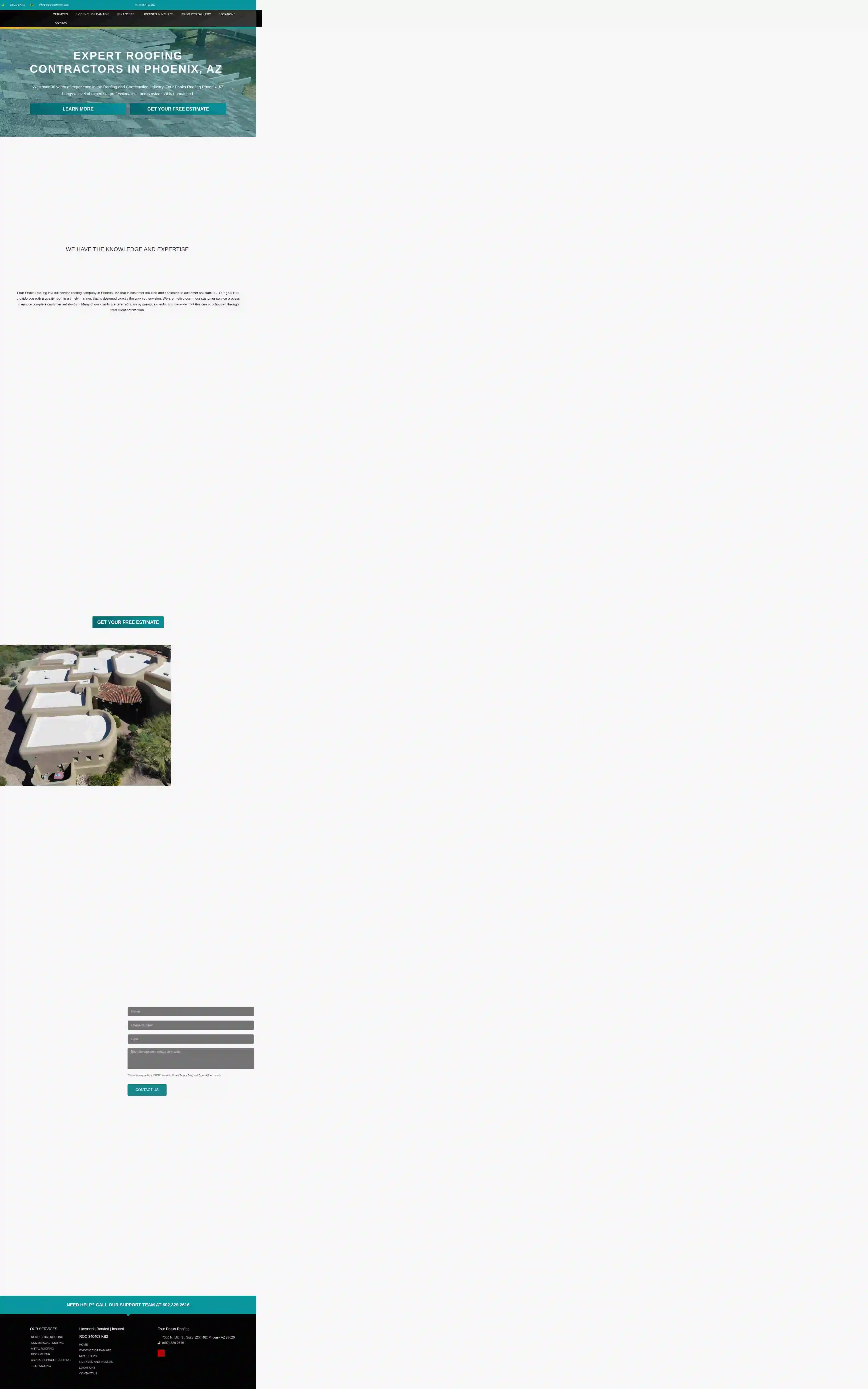
Four Peaks Roofing phoenix
4.821 reviews7000 N. 16th St. Suite 120 #402, Phoenix, 85020, USWith over 30 years of experience in the Roofing and Construction industry, Four Peaks Roofing Phoenix, AZ brings a level of expertise, professionalism, and service that is unmatched. We take pride in caring for our clients’ homes as if they were our own. Many of our clients come to us with a leaking roof that may have been caused by a recent storm. If you expect that your roof has recently been damaged by wind, hail, or other storms, call us and our professional Phoenix roofing contractors will manage your roofing project from start to finish, ensuring that you are completely satisfied with your new roof. Let us work with your insurance company, as most roof repairs and replacements due to storm damage, are often covered under the homeowners insurance that you are currently paying for. We have the knowledge and expertise to help you through the entire roofing process, whether it is covered through insurance or not. Call Our Phoenix Roofer before further roof damage or interior damage occurs from a compromised roof.
- Services
- Why Us?
- Gallery
Get Quote
Over 17,196+ Roofing Companies onboarded
Our roofing contractors operate in Phoenix and beyond!
Roofyng.com has curated and vetted the Best Roofers near Phoenix. Find a top & trustworthy contractor today.
Tile Roofing FAQs
- Regular Inspections: Inspect your tile roof at least twice a year (spring and fall) and after any severe weather event, such as a hailstorm or high winds. Look for cracked or missing tiles, loose or damaged flashing, and signs of moss or algae growth.
- Clean Gutters and Downspouts: Ensure gutters and downspouts are clear of debris and function correctly to allow for proper water drainage. Clogged gutters can cause water to back up under the tiles and lead to leaks.
- Trim Overhanging Branches: Keep trees around your property trimmed to prevent branches from rubbing against the roof or causing damage from falling debris.
- Remove Debris: Periodically remove leaves, twigs, and other debris that can accumulate on the roof, as they can trap moisture and contribute to the growth of moss or algae.
- Clean the Roof Surface: Clean the roof surface occasionally using a soft brush and a gentle cleaning solution. Avoid using a pressure washer, as it can damage the tiles.
- Repair Promptly: Address any damage or leaks as soon as possible by contacting a qualified tile roofing contractor. Prompt repairs prevent small problems from escalating into major issues.
- Clay tiles: 50-100 years or more
- Concrete tiles: 30-50 years
- Slate tiles: 75-200 years or more
- Chimneys
- Vents
- Skylights
- Valleys
- Walls
How do I care for and maintain a tile roof?
How long do tile roofs last?
What is efflorescence on roof tiles, and how do I remove it?
What is the purpose of flashing on a tile roof?
How do I care for and maintain a tile roof?
- Regular Inspections: Inspect your tile roof at least twice a year (spring and fall) and after any severe weather event, such as a hailstorm or high winds. Look for cracked or missing tiles, loose or damaged flashing, and signs of moss or algae growth.
- Clean Gutters and Downspouts: Ensure gutters and downspouts are clear of debris and function correctly to allow for proper water drainage. Clogged gutters can cause water to back up under the tiles and lead to leaks.
- Trim Overhanging Branches: Keep trees around your property trimmed to prevent branches from rubbing against the roof or causing damage from falling debris.
- Remove Debris: Periodically remove leaves, twigs, and other debris that can accumulate on the roof, as they can trap moisture and contribute to the growth of moss or algae.
- Clean the Roof Surface: Clean the roof surface occasionally using a soft brush and a gentle cleaning solution. Avoid using a pressure washer, as it can damage the tiles.
- Repair Promptly: Address any damage or leaks as soon as possible by contacting a qualified tile roofing contractor. Prompt repairs prevent small problems from escalating into major issues.
How long do tile roofs last?
- Clay tiles: 50-100 years or more
- Concrete tiles: 30-50 years
- Slate tiles: 75-200 years or more
What is efflorescence on roof tiles, and how do I remove it?
What is the purpose of flashing on a tile roof?
- Chimneys
- Vents
- Skylights
- Valleys
- Walls